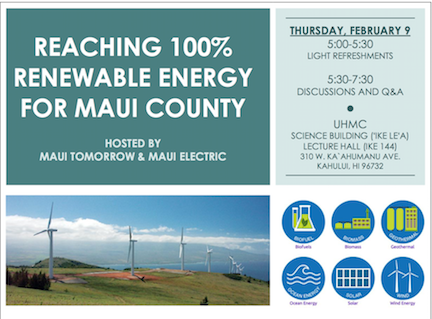Oahu Wind Integration Study (OWIS) conducted by the Hawaii Natural Energy Institute at the University of Hawaii at Manoa, General Electric and the Hawaiian Electric Company found the following:
- Using state-of-the-art wind power forecasting to help anticipate the amount of power that will be available from wind.
- Increasing power reserves to help manage wind variability and uncertainty in wind power forecasts;
- Reducing minimum stable operating power of baseload generating units to provide more power reserves
- Increasing ramp rates (the time it takes to increase or decrease output) of Hawaiian Electric’s thermal generating units
- Implementing severe weather monitoring to ensure adequate power generation is available during periods of higher wind power variability
- Evaluating other resources capable of contributing reserve, such as fast-starting thermal generating units and load control programs.
Translation: Although wind will provide significant energy, HECO will need to have back up fossil fuel plants to meet peak load requirements. See the full OWIS study here


